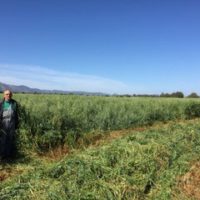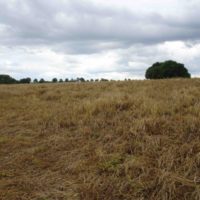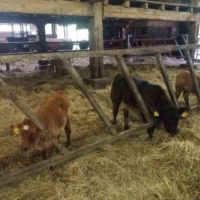Sod seeding used with forage plants in Mediterranean environment
Practice abstract
Description
In Sardinia (Italy), some farmers carry out sod seeding with forage plants. They started using this technique with main objective to reduce the labour needed to carry out soil tillage in their 200 ha farm. Traditionally, the farm soils were ploughed during summer, then harrowed, seeded before the first autumn rains and, finally, rolled. Adopting sod seeding, the farmers had to wait for the first rains to perform the weed control with glyphosate, a compulsory practice with sod seeding. After that, they used a disc seeder to seed legume-grasses mixture (Squarroso Clover/Vetch mixed with oat or Italian rye grass). The farmers gained other benefits from the adoption of sod seeding:
- Timeliness of seeding at the most favourable conditions of soil moisture;
- Use of lower amounts of fuel (at most, 15 kg) and seeds per hectare
- Improved relative water content of soil (estimated +40%), which is important where rains are unpredictable and scarce during spring;
- Lower wear of working organs of the seeder;
- Greater soil lift during rainy periods;
- Comparable (or even higher) harvested forage dry matter yield.
Nonetheless, the lower growth rate of grass in sod plots requires to well planning seeding time to have a satisfactory sward establishment at the start of the season.
To adopt successfully the sod seeding in a new farm, the farmers recommended to ask to experts about the most adapted type of machine (disc or tine seeder) for the farm soils, and to test the best species and adapted varieties. Sod seeding requires an accurate weed management before seeding to be a successful technique. Nonetheless, this aspect could be of minor importance for farmers where grazing is carried out, because grazing animals control the remaining weeds.
Abstract also available in:
Dutch | French | German | Italian | Polish | Swedish
Additional information
| Farming system | conventional farming |
|---|---|
| Domains of innovation | farm system, forage mixture |
| Main types of animal | dairy cattle |
| Country | Italy |
| Product type | Practice abstract |
| Language | English |





